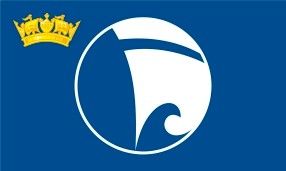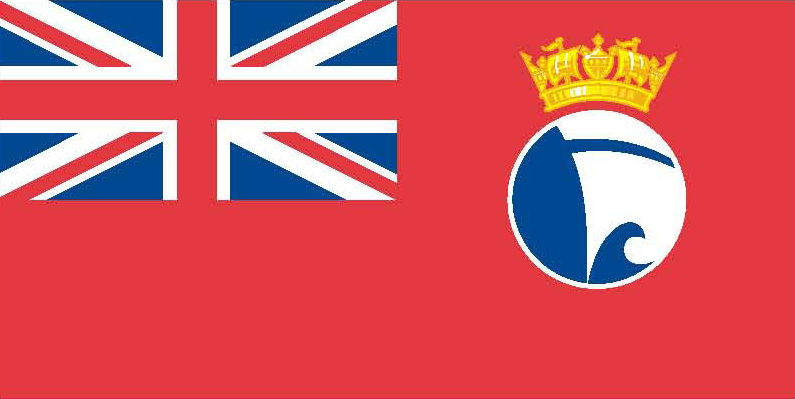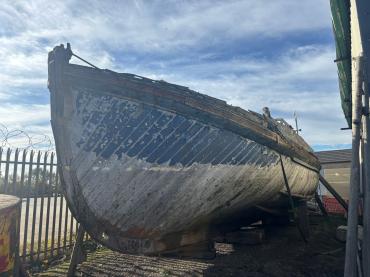Details
Construction
Dimensions
History
Commissioned by the Royal National Lifeboat Institution to save lives at sea, H F BAILEY was built by Groves & Gutteridge in 1934 at Cowes to a design by G.L. Watson. The lifeboat was donated by Henry Francis Bailey of Brockenhurst at a cost of £7307 14s. The lifeboat entered service at Cromer on 12 December 1935 as No1 lifeboat under Coxswain Henry Blogg, already famous for his medal winning rescues. The boat launched 154 times and saved 448 lives at Cromer. During this time her crew were awarded one Gold, two Silver and nine Bronze awards for gallantry by the RNLI. She was transferred to Helvick Head (Eire) in 1946.
When sold out of service in 1973, the famous boat was on display outdoors at Thorpe Water Sport Park in Surrey before Sir Peter Cadbury bought her and presented her to the RNLI Henry Blogg Museum in 1991. In 2003 she was officially transferred to the RNLI Heritage Trust.
Significance
1. What is the vessel’s ability to demonstrate history in her physical fabric?
HF BAILEY is a Watson class lifeboat commissioned in 1935 by the Royal National Lifeboat Institution. She was the first of the 46ft, twin engine version of the class and was fitted with twin Weyburn engines. The twin screws were protected in tunnels for slipway launch and recovery, with the rudder within a stern frame. Although 30 of these boats were produced, there were many variations within that number and only four were fitted with twin petrol engines. Of these, only HF BAILEY and one other had an internal rudder, with HF BAILEY now being the only survivor to boast this feature.
The hull, deck and most of the superstructure are original with some minor alterations to accommodate changes in lifesaving technology and practice during her time as a working lifeboat. The engines, accumulator, emergency fuel tanks, coolant tanks, spanner racks and most of the wiring are original. The binnacle, compass, tabernacle, mast, capstan, pump and wheel all survive. There are various fire extinguishers spanning much of the time the boat was on active service and the anchor appears to have been replaced at some point. Currently only one original air case remains with the boat. The fuel tanks and most of the communications and search and rescue equipment are absent. Benches in the forward well are also missing.
There is some evidence of changes to the fabric which reflects the boat’s history. The original funnel has been replaced with a shorter version, additional mast pieces have been added and the steering position moved further aft, allowing the canopy over the steering well to be extended. This has resulted in a reduction of the attached windscreen from a three-sided screen to a single flat screen. Weather cover hooks along the cockpit coaming are an in-service addition and extra vents have been added on deck. Communication equipment was updated while the boat served as part of the relief fleet in the 1960s and some of this equipment and some signage from this era remain on the boat. The hull on the port side shows damage to the double diagonal planking and the starboard bow has some small dents. Neither of these are from her time afloat when quality repairs were undertaken leaving no trace of damage recorded on service. Some of the deck boards do not appear to fit correctly so may have been sourced from another boat or resulted from changes made to the steering position.
Attempts have been made to return her to her original livery, with the addition of the name tag 'Cromer Lifeboat' to the bow. On her return to Cromer as a museum object, the paint was stripped and the boat repainted. Records of methods and materials used have not been kept but some photographs exist. New fenders were made and installed at the bow and stern but one original fender remains onboard. A horn has been added, similar to her original, and the navigation lights rewired.
2. What are the vessel’s associational links for which there is no physical evidence?
HF BAILEY is nationally significant due to her association with volunteer Henry Blogg, the RNLI’s most decorated coxswain. Henry Blogg's record of three gold medals for gallantry, four silver, the George Cross, as well as his international awards, remains unsurpassed in the Institution. He was awarded his third gold medal and two silver medals for his bravery between 1935 and 1945 while in command of this vessel. He was also awarded the British Empire medal in 1941. His crew (while serving on HF BAILEY) were awarded one silver and 15 bronze medals. The lifeboat was launched 154 times and saved 448 lives while stationed at Cromer. This is the most intact surviving lifeboat coxswained by Henry Blogg.
The lifeboat is representative of all the RNLI wooden boats, some still under sail which served during the Second World War rescuing others with the added dangers of mines and enemy fire. The east coast convoy route brought increasing pressure and HF BAILEY’s service record stands as an impressive reminder of this aspect of home front effort. She has strong local associations with Cromer, as demonstrated by the success of the appeal to return her to the town after service. An independent trust was set up to raise funds and buy the lifeboat at auction, restore her and donate her to the RNLI lifeboat museum in Cromer. Sir Peter Cadbury heard of the appeal and the lifeboat was secured for the town with his support.
The vessel featured in various special interest publications and documentaries have included interviews with people who crewed with Henry Blogg talking about rescues made onboard. There is a British Pathé newsreel featuring the aftermath of the rescue to the Cantabria in 1938 and recording the naming ceremony of the lifeboat in 1937. RNLI Henry Blogg Museum holds the original returns of service which record every launch of the lifeboat at Cromer and list the crew. There are Minute books and accounts of Cromer lifeboat station committee including authorisation for repairs to the boat and replenishment of stores. There is also a substantial collection of photographs and press cuttings, as well as an oral history and a BBC vinyl record of ‘An appeal to the nation’ by Henry Blogg which was broadcast in 1941.
HF BAILEY was recorded on the National Register of Historic Vessels in 1999 and included in the National Historic Fleet.
3. How does the vessel’s shape or form combine and contribute to her function?
The 46ft Watson Class lifeboat was an effective life-saving craft. Its form was dictated by the demands of saving lives at sea but also resulted in an attractive wooden boat. The hull shape reflects the need for a speedy response, as well as stability in the harshest of seas, and space to accommodate and protect the twin screws. HF BAILEY saw some adaptations to facilitate use, with her funnel shortened to fit her in the Cromer lifeboat station boat house. At Helwick Head in 1945, she was moored in the open which may have resulted in the steering wheel being moved further aft, extending the shelter and installing a weather cover to protect her from the rain. In later life, she was sold to a private owner for intended use as a leisure craft. As the boat was not afloat for some time, the aircases were removed to increase ventilation and slow deterioration.
The boat was designed slightly larger than her direct predecessor (the Watson cabin motor 45ft 6in) and although the lines of the hull were very similar, the new boats were intended purely as motorboats with no sail and so were slightly wider and longer to accommodate the engines and screw tunnels. There was no need for a drop keel. The lines and dimensions of the boat are set in the general arrangement drawing and associated specifications. As the boat was expected to endure in adverse weather and greater strain than most vessels, the materials used are of a very high quality. Honduras mahogany was used for the planking, the wood keel was made of ‘Selected East India Teak’, the stem and post of English oak and floors of Canadian rock elm. The quality of the materials and build of the boat are evident in the boat today.
The twin petrol engines and propellers gave good manoeuvrability, essential when approaching vessels in distress or approaching vulnerable survivors in the water. The double diagonal planking gave her hull and deck the strength and flexibility needed to keep the boat whole when launched in storms or attempting to get alongside much larger casualties. The cabin and fore and aft shelters provided some protection from the elements to her crew and casualties, but space was limited by the need for air cases which, along with the division of the hull into eight watertight compartments, kept her afloat even when holed.
HF BAILEY is now installed in the RNLI Henry Blogg Museum in Cromer within view of the pier from which she launched during her operational life. The boat is the centre piece of a purpose-built museum is an imposing feature within the small space. She inspires visitors with the work of the RNLI and Henry Blogg. The water safety messages included in the displays mean that the boat is, indirectly, still being used to save lives at sea today.
Jacqui Palmer
Heritage Development Manager, RNLI, 2019. Updated NHS-UK, January 2024.
Key dates
-
1934
Built by Groves & Gutteridge of Cowes as a Watson type lifeboat, donated by Henry Francis Bailey of Brockenhurst
-
December 1935
Arrives at Cromer, to serve as No 1 lifeboat under Coxswain Henry Blogg
-
August 1937
Sir Samuel Hoare officially names the H F BAILEY after its donor
-
October 1939
29 people rescued from SS MOUNT IDA, wrecked in a gale and heavy seas
-
January 1941
H F BAILEY saved 101 crew members from SS MERIONES following bombing by German aircraft
-
August 1941
88 men saved from 6 vessels wrecked on Haisborough Sands
-
October 1941
44 crew members rescued from the SS ENGLISH TRADER grounded in a full gale and heavy seas
-
December 1945
Leaves Cromer station
-
August 1946
Transferred to Helvick Head (Eire) where she saved 12 lives
-
1960
Transferred to Relief Fleet
-
June 1973
H F BAILEY sold and put on display at Thorpe Water Park, Surrey
-
April 1991
Bought at auction by Mr Peter Cadbury and gifted to RNLI Henry Blogg Museum and people of Cromer. Restored and repainted by volunteers
-
April 2006
Moved into purpose-built museum. Strategy of care changed to conservation
Sources
Classic Boat: H F Bailey's new home, April 2004
Own this vessel?
If you are the owner of this vessel and would like to provide more details or updated information, please contact info@nationalhistoricships.org.uk













